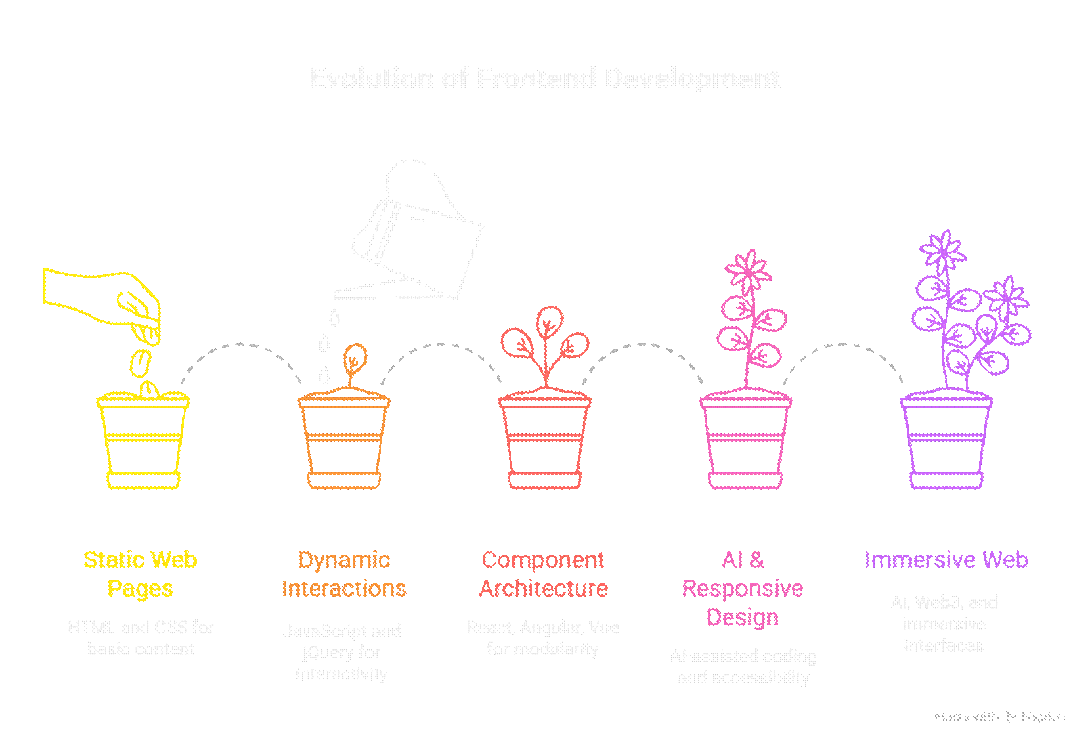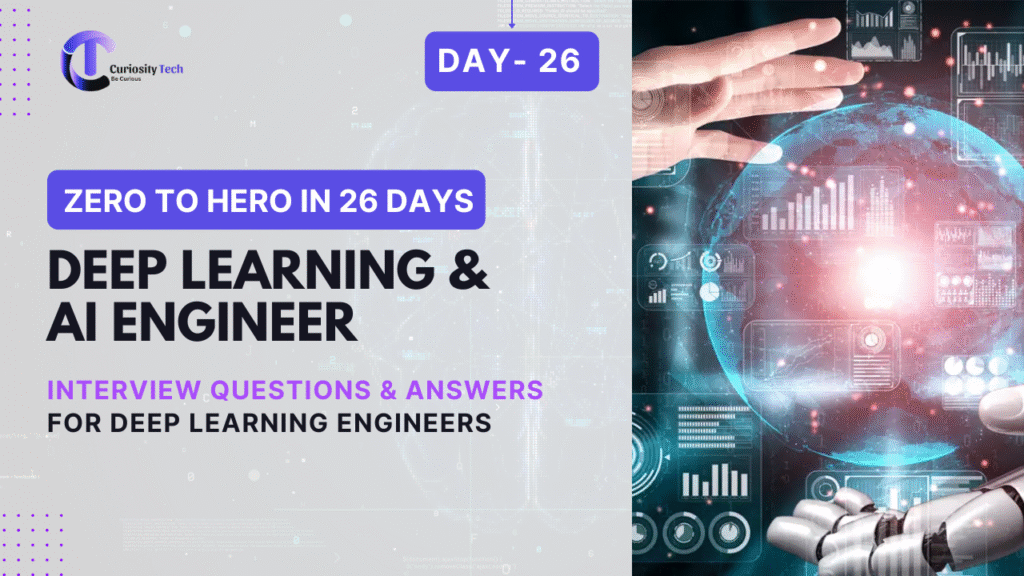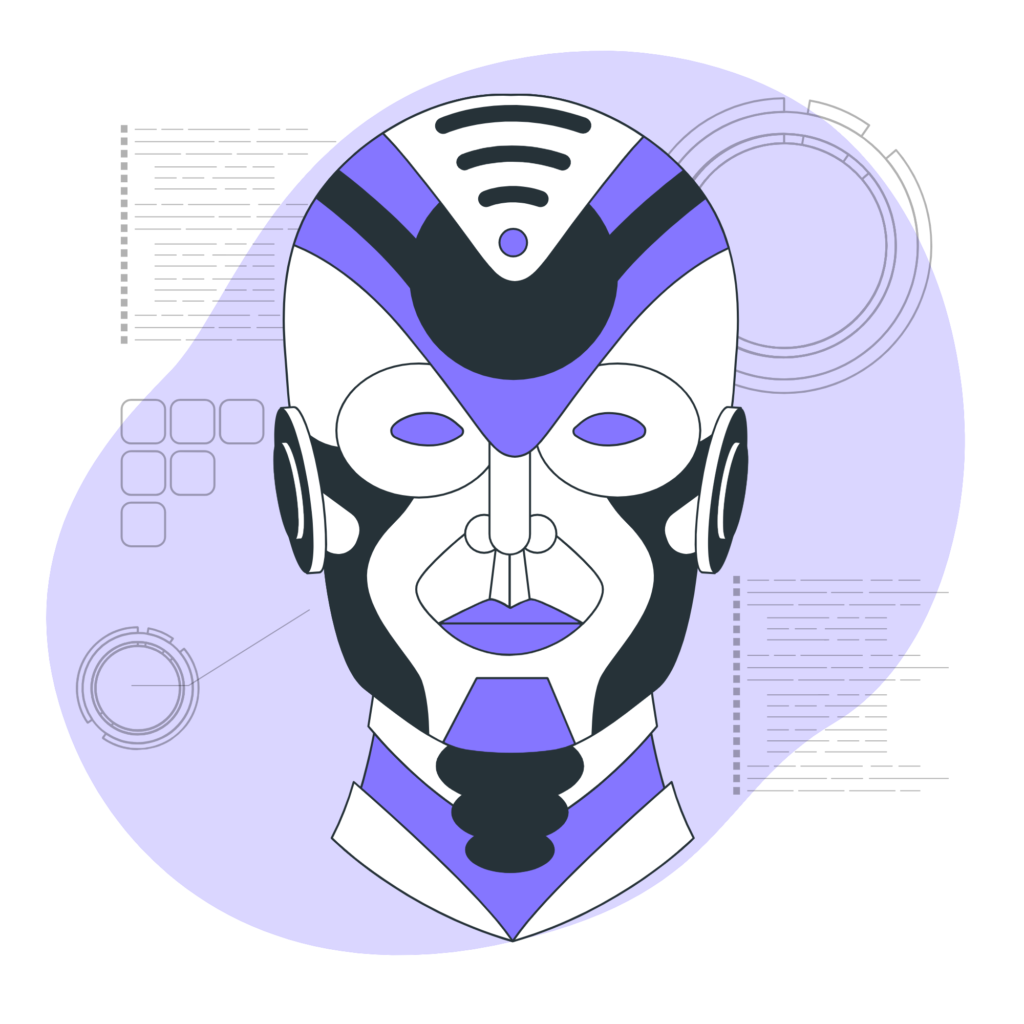The world of frontend development has never been static. From simple HTML and CSS pages to complex JavaScript frameworks and responsive designs, frontend development has constantly evolved. But as we look toward the next era, the intersection of Artificial Intelligence (AI), Web3, and modern frontend technologies promises to redefine how we build and experience the web.
At Curiosity Tech, we’ve been observing these trends closely and guiding developers to stay ahead of the curve, ensuring businesses and creators leverage the full potential of these emerging technologies.
1. AI-Powered Frontend Development
Artificial Intelligence isn’t just for data scientists or backend engineers anymore—it’s reshaping the frontend too.
- Intelligent User Interfaces: AI can now analyze user behavior to automatically adjust layouts, recommend personalized content, or optimize load times. Imagine websites that adapt dynamically based on the user’s preferences and interaction history.
- AI-Assisted Code Generation: Tools powered by AI, like Copilot or ChatGPT for developers, are helping frontend developers write cleaner code faster, detect errors proactively, and even suggest responsive design improvements.
- Enhanced Accessibility: AI can automatically generate alt texts for images, provide voice-controlled navigation, and ensure real-time accessibility compliance, making websites inclusive to all users.
At CuriosityTech.in, our team leverages AI-driven tools to enhance UI/UX design efficiency and predict user interactions, giving businesses a competitive edge.
2. Web3 and Decentralized Frontend Experiences
The Web3 revolution introduces a decentralized web, powered by blockchain, NFTs, and token economies. While the backend of Web3 often steals the spotlight, the frontend is critical to adoption.
- Decentralized Applications (dApps): Frontend developers now need to integrate wallets, smart contracts, and blockchain interactions seamlessly into user interfaces.
- Ownership and Authentication: Users can log in via cryptographic wallets instead of traditional forms, creating trustless systems.
- Dynamic Content Powered by Tokens: Web3 allows for new monetization models where frontend elements like avatars, virtual goods, and content can be tokenized and directly managed by the user.
Curiosity Tech has been actively exploring Web3 UI patterns to build interfaces that are both intuitive and decentralized, ensuring users have a seamless experience while interacting with blockchain-powered applications.
3. Next-Generation Frontend Frameworks and Technologies
Modern frontend frameworks are evolving to support AI and Web3 integrations, with emphasis on performance and scalability.
| Technology | Trend/Use | Impact |
| React 18+ / Next.js | Server Components & Streaming | Faster SSR and client interactivity |
| Svelte / Solid.js | Compile-time optimization | Smaller bundles, faster load |
| Three.js / Babylon.js | 3D Web Experiences | Immersive and interactive UIs |
| Tailwind CSS / Windi CSS | Utility-first design | Easier theming & responsive layouts |
| AI Tools | Copilot, ChatGPT, AI linting | Faster dev cycles & code suggestions |
| Web3 SDKs | Web3.js, Ethers.js, Moralis | Decentralized UX integration |
These frameworks and tools empower developers to create intelligent, interactive, and decentralized user interfaces.
4. Human-Centric Design in a Tech-Heavy Era
While AI and Web3 can add tremendous power, humanized design remains key. Frontend developers must ensure:
- Interfaces are intuitive and reduce cognitive load.
- Accessibility is prioritized for all users, including differently-abled individuals.
- Interactions feel personalized yet non-intrusive, leveraging AI without making the user feel surveilled.
Curiosity Tech’s philosophy is to blend cutting-edge technology with empathy-driven design, ensuring end-users always feel at the center of the experience.
5. Infographic Idea: The Evolution of Frontend Development
Hierarchical Timeline Diagram

Infographic Description:
This timeline visually represents how frontend development has progressed from static content to AI-powered, decentralized, and immersive web experiences.
6. Key Takeaways
- AI is transforming frontend development by automating tasks, predicting user behavior, and enhancing personalization.
- Web3 requires new UX paradigms, integrating wallets, smart contracts, and decentralized interactions.
- Next-gen frameworks enable faster, scalable, and interactive frontend experiences.
- Human-centric design is essential to maintain usability, accessibility, and user satisfaction.
At CuriosityTech.in, we help businesses navigate these trends by providing cutting-edge frontend solutions and consultation, blending the latest technologies with intelligent design thinking.
7. Conclusion
The future of frontend development is exciting and challenging. AI, Web3, and new frameworks are not just buzzwords—they are the tools that will define the next era of web experiences. Developers and businesses that embrace these trends today will lead tomorrow’s digital landscape.
By staying informed, experimenting with new technologies, and prioritizing the user experience, frontend development can evolve into a dynamic, adaptive, and inclusive ecosystem.


